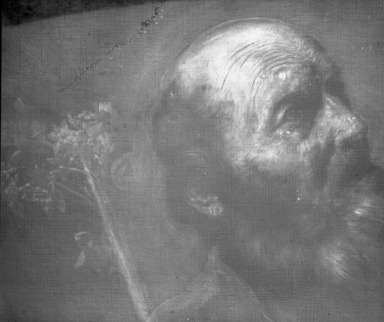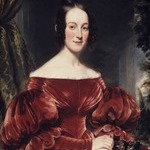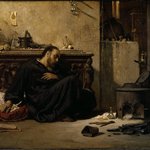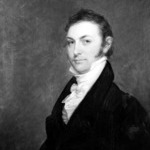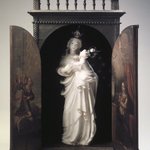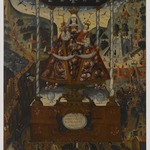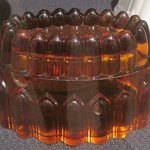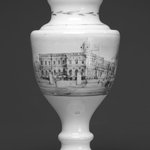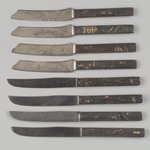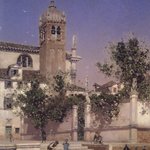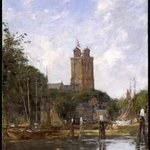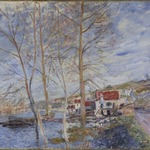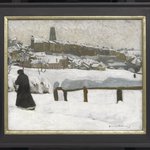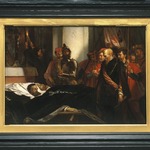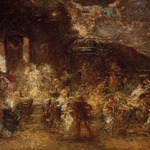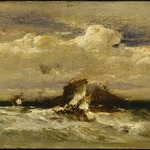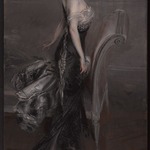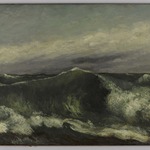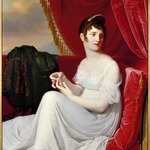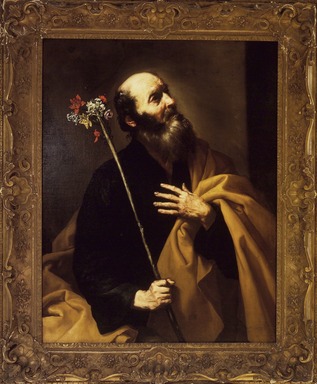

Jusepe de Ribera (Spanish, 1591–1652). Saint Joseph with the Flowering Rod, early 1630s. Oil on panel, 46 × 35 3/4 in. (116.8 × 90.8 cm). Brooklyn Museum, Gift of George D. Pratt, 11.563 (Photo: Brooklyn Museum, 11.563.jpg)

Jusepe de Ribera (Spanish, 1591–1652). Saint Joseph with the Flowering Rod, early 1630s. Oil on panel, 46 × 35 3/4 in. (116.8 × 90.8 cm). Brooklyn Museum, Gift of George D. Pratt, 11.563 (Photo: Brooklyn Museum, 11.563_bt_acetate_bw.jpg)
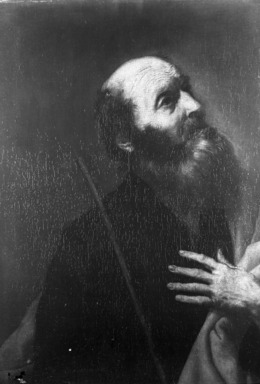
Jusepe de Ribera (Spanish, 1591–1652). Saint Joseph with the Flowering Rod, early 1630s. Oil on panel, 46 × 35 3/4 in. (116.8 × 90.8 cm). Brooklyn Museum, Gift of George D. Pratt, 11.563 (Photo: Brooklyn Museum, 11.563_detail_bt_acetate_bw.jpg)
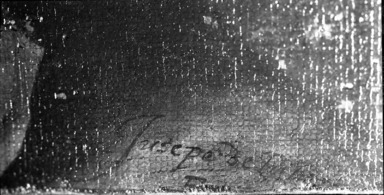
Jusepe de Ribera (Spanish, 1591–1652). Saint Joseph with the Flowering Rod, early 1630s. Oil on panel, 46 × 35 3/4 in. (116.8 × 90.8 cm). Brooklyn Museum, Gift of George D. Pratt, 11.563 (Photo: Brooklyn Museum, 11.563_detail2_at_acetate_bw.jpg)
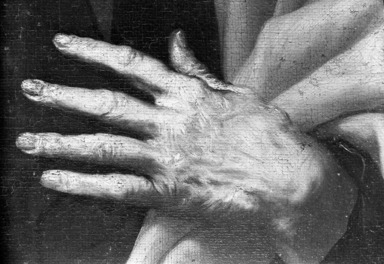
Jusepe de Ribera (Spanish, 1591–1652). Saint Joseph with the Flowering Rod, early 1630s. Oil on panel, 46 × 35 3/4 in. (116.8 × 90.8 cm). Brooklyn Museum, Gift of George D. Pratt, 11.563 (Photo: Brooklyn Museum, 11.563_detail3_at_acetate_bw.jpg)
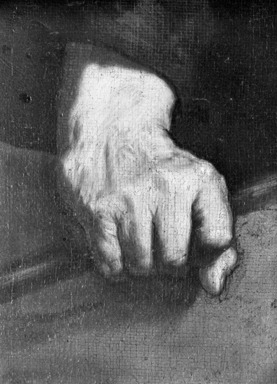
Jusepe de Ribera (Spanish, 1591–1652). Saint Joseph with the Flowering Rod, early 1630s. Oil on panel, 46 × 35 3/4 in. (116.8 × 90.8 cm). Brooklyn Museum, Gift of George D. Pratt, 11.563 (Photo: Brooklyn Museum, 11.563_detail4_at_acetate_bw.jpg)
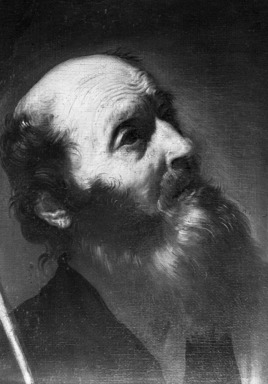
Jusepe de Ribera (Spanish, 1591–1652). Saint Joseph with the Flowering Rod, early 1630s. Oil on panel, 46 × 35 3/4 in. (116.8 × 90.8 cm). Brooklyn Museum, Gift of George D. Pratt, 11.563 (Photo: Brooklyn Museum, 11.563_detail5_at_acetate_bw.jpg)
Saint Joseph with the Flowering Rod
Jusepe de Ribera
European Art
On View: Luce Visible Storage and Study Center, 5th Floor


